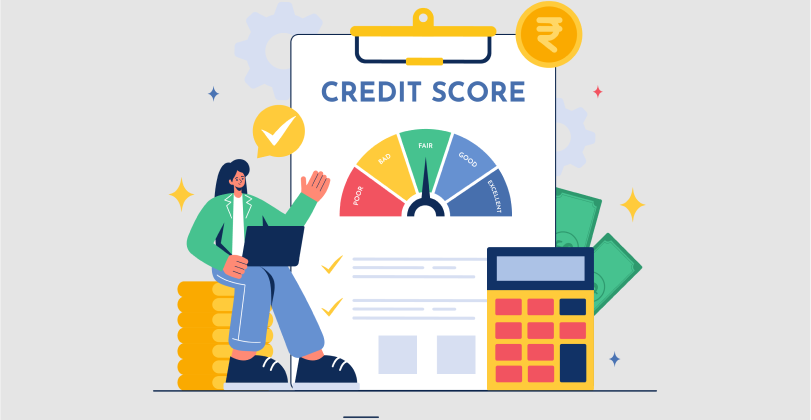How to Choose the Right Loan for Your Business
How to Choose the Right Loan for Your Business
Starting and running a business is an exciting journey, but it often requires financial support to grow and thrive. One of the most common ways to secure funding is through a business loan. However, with so many loan options available, choosing the right one can feel overwhelming. This guide will walk you through everything you need to know about selecting the best loan for your business, ensuring you make an informed decision that aligns with your goals.
Understanding Your Business Needs
Before diving into loan options, it’s crucial to assess your business needs. Ask yourself:
- Why do I need the loan?
Are you looking to expand your operations, purchase new equipment, or cover day-to-day expenses? Identifying the purpose of the loan will help you determine how much money you need and what type of loan is most suitable. - How much can I afford to borrow?
Consider your business’s financial health. Review your cash flow, revenue, and expenses to determine how much you can realistically repay without straining your finances. - What is my credit score?
Lenders often evaluate your credit score to assess your creditworthiness. A higher score can increase your chances of securing a loan with favorable terms.
By answering these questions, you’ll have a clearer picture of your financial requirements and be better prepared to explore loan options.
Types of Business Loans
There are several types of business loans available, each designed to meet specific needs. Here’s an overview of the most common options:
a. Term Loans
Term loans are one of the most traditional forms of business financing. They involve borrowing a lump sum of money and repaying it over a fixed period, typically with interest. These loans are ideal for long-term investments, such as purchasing real estate or expanding operations.
Pros:
- Predictable repayment schedule
- Lower interest rates compared to other loan types
Cons:
- Requires strong credit history
- May involve collateral
b. SBA Loans
Small Business Administration (SBA) loans are government-backed loans designed to support small businesses. They offer competitive interest rates and longer repayment terms, making them an attractive option for many entrepreneurs.
Pros:
- Lower down payments
- Flexible repayment terms
Cons:
- Lengthy application process
- Strict eligibility criteria
c. Business Lines of Credit
A business line of credit provides access to a predetermined amount of funds that you can draw from as needed. You only pay interest on the amount you use, making it a flexible option for managing cash flow or covering unexpected expenses.
Pros:
- Reusable funds
- Only pay for what you use
Cons:
- Higher interest rates than term loans
- Requires discipline to avoid overspending
d. Equipment Financing
If your business needs to purchase machinery, vehicles, or other equipment, equipment financing may be the right choice. The equipment itself serves as collateral, reducing the risk for lenders.
Pros:
- Preserves cash flow
- Equipment acts as collateral
Cons:
- Limited to equipment purchases
- Risk of obsolescence
e. Invoice Financing
Invoice financing allows businesses to borrow money against outstanding invoices. This is particularly useful for companies that face delays in receiving payments from clients.
Pros:
- Improves cash flow
- Quick access to funds
Cons:
- Higher fees
- Dependent on client payments
Evaluating Loan Terms and Conditions
Once you’ve identified the type of loan that suits your needs, it’s essential to evaluate the terms and conditions offered by lenders. Here are some key factors to consider:
a. Interest Rates
Interest rates significantly impact the total cost of your loan. Compare rates from multiple lenders to find the most competitive option.
b. Repayment Terms
Consider the length of the repayment period and whether it aligns with your business’s cash flow. Longer terms may result in lower monthly payments but higher overall interest costs.
c. Fees and Penalties
Be aware of any additional fees, such as origination fees, prepayment penalties, or late payment charges. These can add up and affect the affordability of the loan.
d. Collateral Requirements
Some loans require collateral, such as property or equipment, to secure the loan. Understand the risks involved, as defaulting on the loan could result in losing the collateral.
Choosing the Right Lender
The lender you choose plays a significant role in your loan experience. Here are some tips for selecting the right one:
a. Traditional Banks
Traditional banks offer a wide range of loan products and competitive interest rates. However, they often have strict eligibility criteria and a lengthy application process.
b. Online Lenders
Online lenders provide a faster and more convenient application process, making them ideal for businesses that need quick access to funds. However, they may charge higher interest rates.
c. Credit Unions
Credit unions are member-owned financial institutions that often offer lower interest rates and personalized service. However, membership is required to access their services.
d. Peer-to-Peer Lending
Peer-to-peer lending platforms connect borrowers with individual investors. This option can be more flexible but may involve higher interest rates.
Preparing Your Loan Application
A strong loan application increases your chances of approval. Here’s how to prepare:
a. Gather Financial Documents
Lenders will require documents such as tax returns, bank statements, and financial statements to assess your business’s financial health.
b. Write a Business Plan
A well-crafted business plan demonstrates your vision and outlines how you plan to use the loan to achieve your goals.
c. Improve Your Credit Score
If your credit score is low, take steps to improve it before applying for a loan. Pay off outstanding debts and ensure all payments are made on time.
Common Mistakes to Avoid
When choosing a business loan, avoid these common pitfalls:
- Borrowing more than you need: This can lead to unnecessary debt and higher interest costs.
- Ignoring the fine print: Always read the terms and conditions carefully to avoid surprises.
- Failing to compare options: Shopping around can help you find the best deal.
Conclusion:
Choosing the right loan for your business is a critical decision that requires careful consideration. By understanding your needs, exploring loan options, evaluating terms, and selecting the right lender, you can secure the funding you need to achieve your business goals. Remember to approach the process with patience and diligence, and don’t hesitate to seek professional advice if needed.
With the right loan in place, your business will be well-positioned to grow, thrive, and succeed in today’s competitive marketplace.




Post Comment